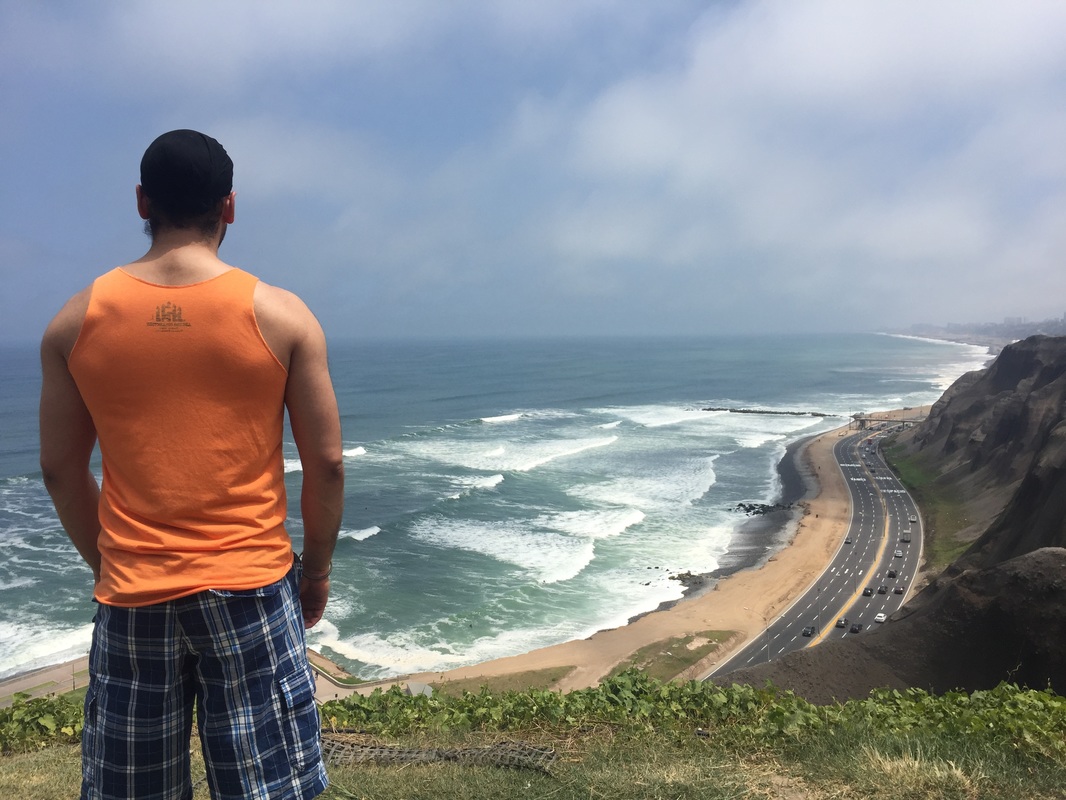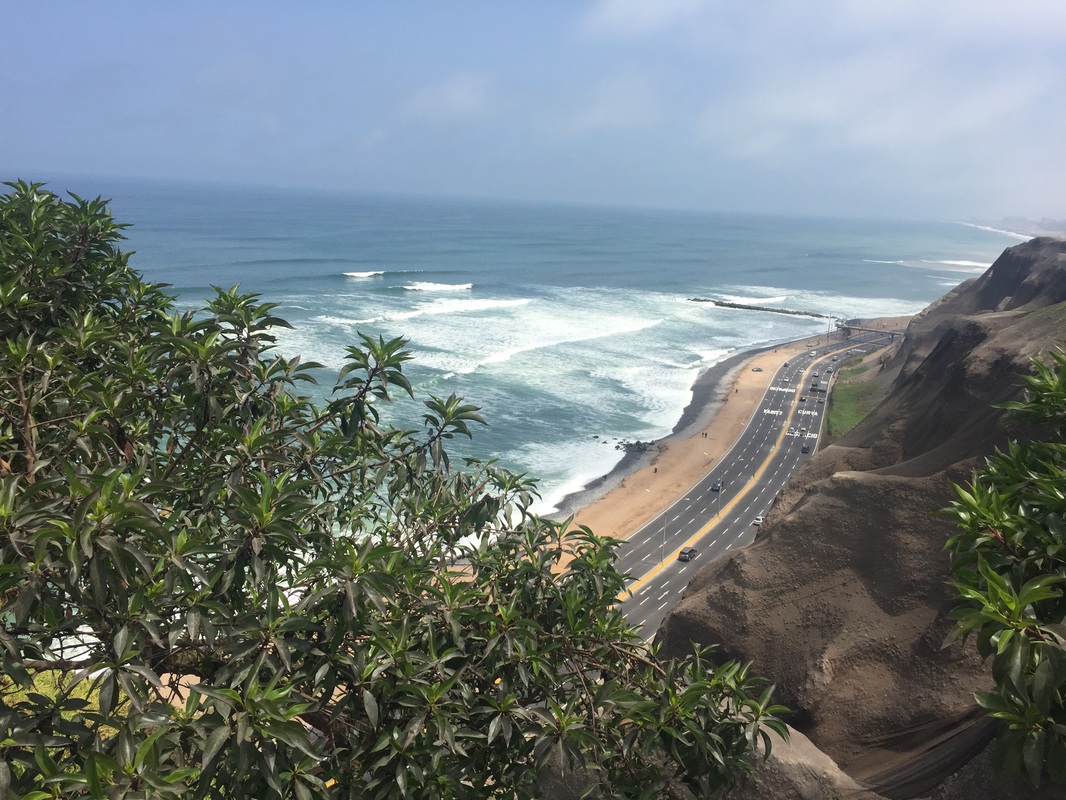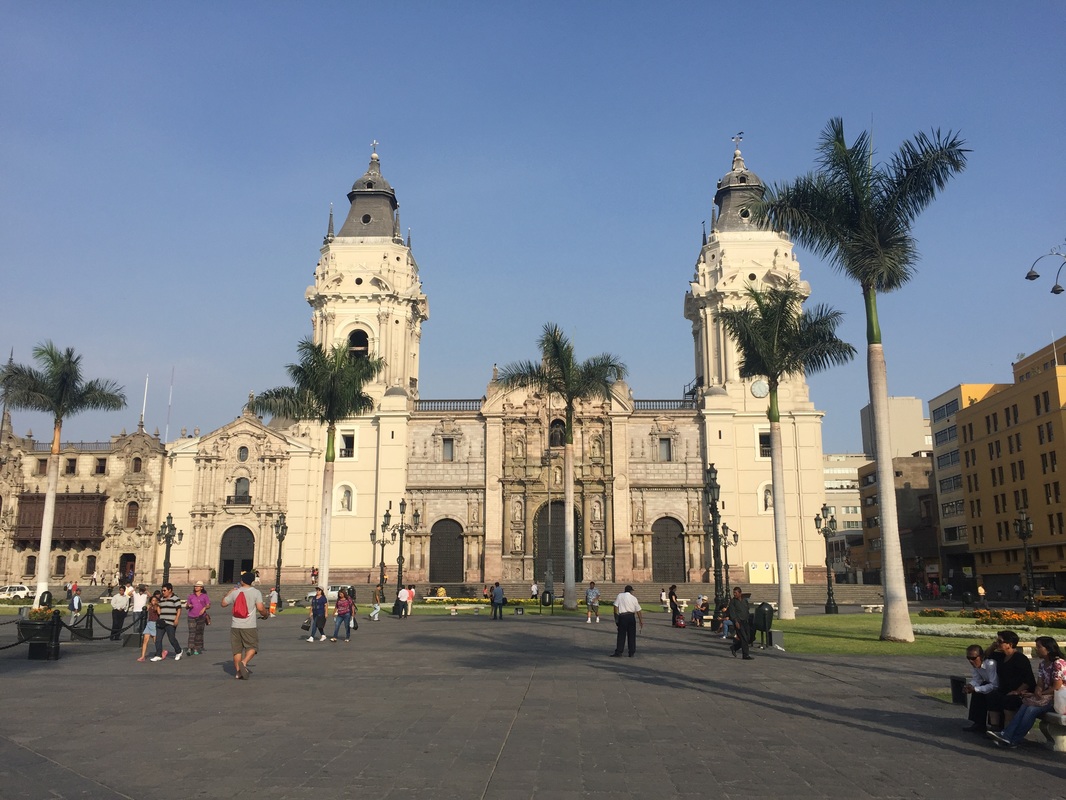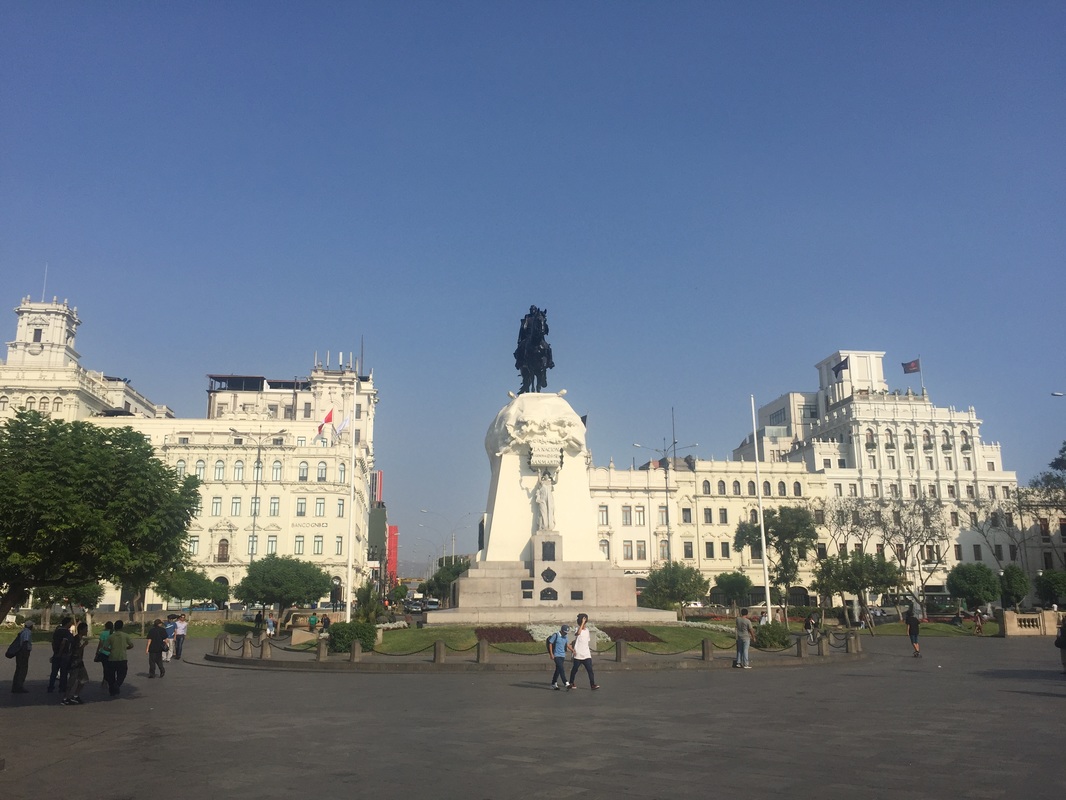SummaryAirport Rating ***** Reception of locals *****
Lima was my gateway to South America and formed the basis of my first impressions of the continent. Its difficult to generalise a whole continent on one city, not all of Europe is like London, not all of Asia is like Amritsar, but the heat and the chaos were two characteristics that would follow in most other cities. In fact, as soon as I left the airport in the nearest taxi we pulled onto a main road, and it was absolute gridlock with cars pulling manoeuvres that I didn't even see in SE Asia. In Asia I came across a lot of 'organised chaos'. Well this was just 'chaos, chaos'. The taxi driver, like many in other countries, was interested in talking about English football and was happy to know that one of his favourite Peruvian players had played for my favourite team. After checking into my room, I decided the first thing I would do was use an app that can connect you with local people to show you around. Once I had sent a message out I decided to go for a late night walk to orientate myself and get a feel for the city. After a long flight (including a layover in Madrid) I was quite tired and only managed about 20 minutes walking around the centre of the Miraflores area. Generally regarded as 'upmarket' the area felt safe, even late at night. Until this point, Hanoi in Vietnam had been the place where I found crossing the road quite difficult, especially at the start. Lima was comfortably more dangerous. In Hanoi I was told that you just need to step into the road and vehicles will automatically navigate their way around you, in Lima, if you weren't careful they would go straight through you. I found myself waiting for sometimes nearly 5 minutes before I was safely able to cross. The one thing I'd like to mention about my journey to Peru was the stop over in Madrid. In attempting to board the flight from Madrid to Lima, I was checking my bags through security and once I had walked through the metal detector, a security guard stopped me and asked me to remove my patka. I politely refused and explained it was an article of faith. The guard remained unconvinced so with a bit more force I explained that the metal detector had not gone off and therefore I would not be removing my patka unless I was given a good reason. I then gestured that he was more than welcome to do a patdown, which he did and then let me through. As I was collecting my belongings from the tray, another security personnel approached me. She asked me if everything was okay (in English) and I replied yes. She then enquired whether I felt I was ill treated by the security guard. I replied that I didn't feel ill treated as the guard had let me through once I explained my position but added that her staff should have further training on Sikhs to prevent other passengers having to explain themselves. She made a note of this and wished me a pleasant journey. Stranger dangerIt was a strange experience, on one side, I was once again targeted for no apparent reason, however, not only did the initial guard relent quite quickly, but a follow up member of staff approached me to ensure I harboured no ill feeling and whether they could be of assistance. I got back from the hotel from my short walk to find a message from a local bakery shop owner who mentioned she would be happy to show me around the following morning. We had a quick, cordial chat to get to know each other and met up early the next morning. The young Peruvian lady was a year older than me, knowledgeable about her local area and passionately proud of her city, which was good to see. We walked toward to Barranco area of the city that overlooks the Pacific Ocean and it was a pretty special visual. The CityI was told that this lady's grandfather had helped build the man-made cliffs that cut into the Pacific Ocean. The rocks were covered with flexible meshes that tried to negate the chances of landslides occurring. Peru is on a seismically active zone with frequent earthquakes and I was told many locals avoid the highway below, specifically out of fear of landslides occurring if they were caught on the road in an earthquake. Despite its danger, there was difficult not to marvel at the beauty and feat of engineering to develop something that looked this good. My guide mentioned that the area was quite wealthy and therefore food would be expensive. The restaurant where we ate was similarly priced to a Nando's back in England and the food was great. I was told that Peru, and specifically Lima were the gastronomic centres of cuisine in South America and I would find it difficult to argue. I tried a couple of Peruvian dishes and was struck by their similarity to Panjabi food. There was a small park on the edge of the cliffs where there were outdoor gyms, tennis courts and a hang gliding centre. The Government had also built a brand new bridge from the Miraflores area to the Barranco area which we walked over and had a good view of the harbour. Unfortunately, everytime we came close to a main road, the fumes and heat from the cars would be almost suffocating. My guide told me a number of stories about Peru's recent history as well as upcoming elections (which were all over the city on large billboards). We walked toward the downtown area of the city, and this was perhaps my least favourite part of the city. Hot, crowded and polluted with very little in the way of good architecture, large spaces or interesting things to see and do we turned around after about an hour of walking. The next day I decided to visit the old city, a one hour drive in the early morning traffic (it took 25 minutes on the return journey). The old city contains a lot of colonial architecture and some of the plazas made me feel like I was in the middle of Madrid. The Plaza San Martin is a large open square and a designated UNESCO world heritage site. The Plaza Mayor dates from the 16th century and is the centre of the city of Lima. The square is surrounded by a number of large, old buildings dating from between the 16th and 20th centuries, with the Government Palance, Archbishop's Palace and Lima Cathedral particularly impressive. Lima Cathedral (pictured above) had most of the tourists flocking towards it but the neo-colonial architecture of the Archbishop's Palace had me drawn to it. The building has intricate details that you could spend hours looking at, but after walking around a few narrow, cobbled streets I made it to the Monastery of San Francisco. I decided to pay the 10 Soles to have a guided tour around the inside of the monastery. The inside of the Monastery felt like a world away from the chaos outside. Dark, cold and eerily quiet, we followed a guide as she showed us around the upper levels of the Monastery and then the catacombs beneath. The rooms on the ground floor were appropriately grande for a building steeped in so much history (having been completed in the 18th century), paintings and murals covered all the walls, with Gold plated statues of Mary and the Crucifix in different rooms. The Monastery had a couple of particularly interesting rooms; the first had a painting of the Last Supper, however the painting had traditional Peruvian food and drink instead of the usual food in most paintings which I thought was quite interesting, and secondly, a room dedicated to Christian Saints, with paintings depicting how many of them were martyred. The fascinating thing was, unlike paintings of Sikhs which show the tortures that were inflicted in detail, this was very subtle, for instance one Saint was pictured holding a cup, but otherwise looking healthy, the implication being that he was poisoned. Racial harmonyTwo famous Peruvian drinks are Inka Cola and Pisco Sours. Inka Cola is manufactured by the Coca Cola Company and is basically diabetes in a bottle. Lime green in colour, its one of the sweetest soft drinks I have ever tried and I didn't try it again.
The humidity in the city is something I won't soon forget, but thankfully, I wouldn't feel such humidity until I had crossed the width of the continent a fair while later. However, Lima, and Peru in general had some qualities which I really admired. The people are all generally friendly but more impressively, race did not seem to be a factor. I found the majority of Lima's population were of European descent with minorities of Amerindians and other races (a demographic that is reversed in other Peruvian cities). However, unlike other countries, the darker skinned indigenous population seemed to walk shoulder to shoulder with their lighter skinned citizens, I saw white people and brown people doing good jobs and menial jobs. Speaking to my guide I asked her whether she felt European or had any affinity to Spain (former colonial rulers) or Italy (from where her family had descended from). She replied that she was fiercely proud of her Peruvian identity and felt Europeans had robbed and pillaged her nation. She was just as Peruvian in her feelings and mannerisms as the Amerindians who had been there for thousands of years. Lima seemed to have three main areas: the beautiful area near the Pacific Coast filled with picturesque scenery and obvious wealth, the downtown area, home to a number of skyscrapers and the football stadium which was hot, stuffy and filled with traffic and the old city, modeled on Southern European capitals. It would be difficult for me to recommend Lima as a place to visit in its own right, its definitely worth a stop off on the road to Machu Picchu to begin to understand Peru, but if you are short of time and you don't visit Lima, you wouldn't be missing out on much. Comments are closed.
|
AuthorBritish Sikh, born in the Midlands, based in London, travelling the world seeing new cultures. Categories
All
|








 RSS Feed
RSS Feed